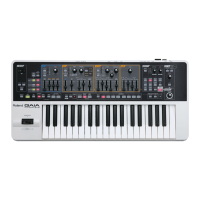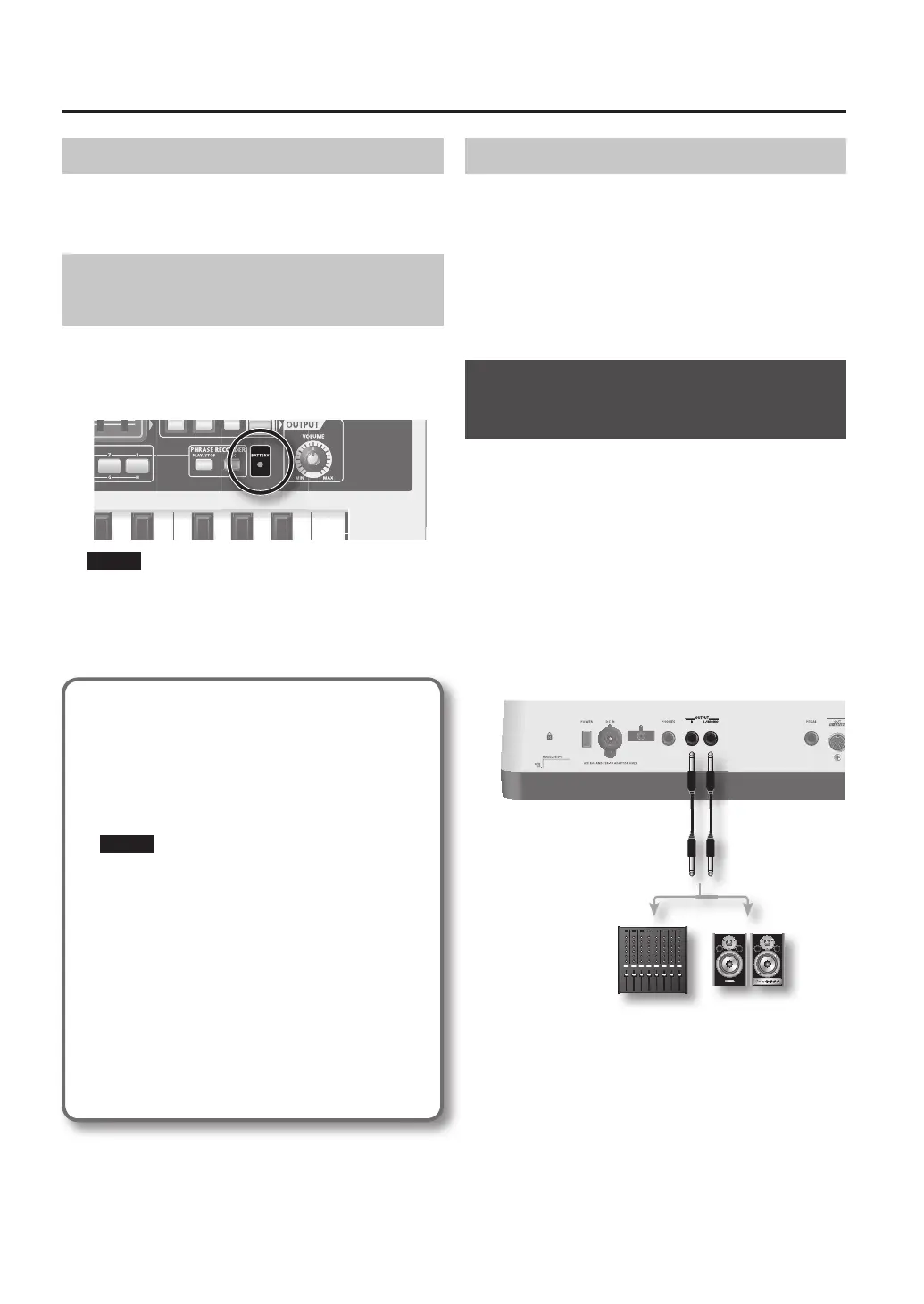
 Loading...
Loading...
Do you have a question about the Roland Gaia SH-01 and is the answer not in the manual?
| Type | Virtual Analog Synthesizer |
|---|---|
| Polyphony | 64 voices |
| Keyboard | 37 keys (velocity-sensitive) |
| Arpeggiator | Yes |
| Synthesis Type | Virtual Analog |
| Sequencer | No |
| MIDI | In, Out |
| Connectivity | MIDI, USB |
| Oscillators | 3 |
| Effects | Reverb, Delay, Flanger, Distortion |
| Weight | 4.2 kg |
| LFO | 1 |
| Filter | High-pass, Low-pass, Band-pass |
| USB | Yes |
| Memory | 64 Patches |
| Power Supply | AC adapter (included) |
| Outputs | Stereo Output (L/MONO, R) |
Explains the GAIA SH-01's sound generation capability using three synthesizers simultaneously.
Describes the five built-in effects (distortion, modulation, delay, reverb, low boost) for sound enhancement.
Covers D BEAM controller, Arpeggiator, and Phrase recorder for expressive live playing.
Details how to use USB memory for storing user patches and phrases.
Explains USB MIDI/AUDIO capabilities for recording and computer integration.
Explains the meaning of WARNING and CAUTION labels for safe usage.
Lists crucial guidelines to follow for preventing fire, electric shock, or injury.
Notes on electrical connections, power supply noise, and battery usage.
Precautions regarding memory data, controls, cables, and transport.
Specific precautions for inserting, handling, and storing USB memory devices.
Explanation of the OSC, FILTER, and AMP sections for sound generation.
Details on V-LINK, TAP TEMPO, KEY HOLD, MONO, PORTAMENTO, TRANSPOSE.
Information on MIDI IN/OUT and USB COMPUTER connectors.
Step-by-step guide for connecting the AC adaptor and using the cord hook.
Instructions for installing AA batteries and safety notes for battery compartment.
Guide on connecting audio output devices and safety recommendations.
Step-by-step guide to safely turn the unit's power on.
Steps to safely turn off the unit's power and connected equipment.
Explanation of Arpeggiator, Tempo, Octave, Transpose, and Phrase recorder.
How to adjust the overall output volume using the VOLUME knob.
Steps to select preset, user, or USB memory patches.
Instructions for recording keyboard and knob operations as phrases.
Explains the three main elements determining sound character: pitch, brightness, loudness.
Selecting waveforms and determining pitch using the OSC section.
Detailed parameters for the filter envelope (Attack, Decay, Sustain, Release, Depth).
Details on AMP envelope parameters (Attack, Decay, Sustain, Release).
Procedure for saving user-created sounds as patches.
Using USB for audio/MIDI recording and connecting to computers.
Using the SH-01 with MIDI devices, channels, and external sequencers.
Specific parameters for Oscillator, Filter, and Amplifier sections.
Parameters for LFO, Modulation LFO, and Effect settings.
Procedure for resetting the unit to its original factory condition.
Guide to diagnosing and resolving common operational problems.